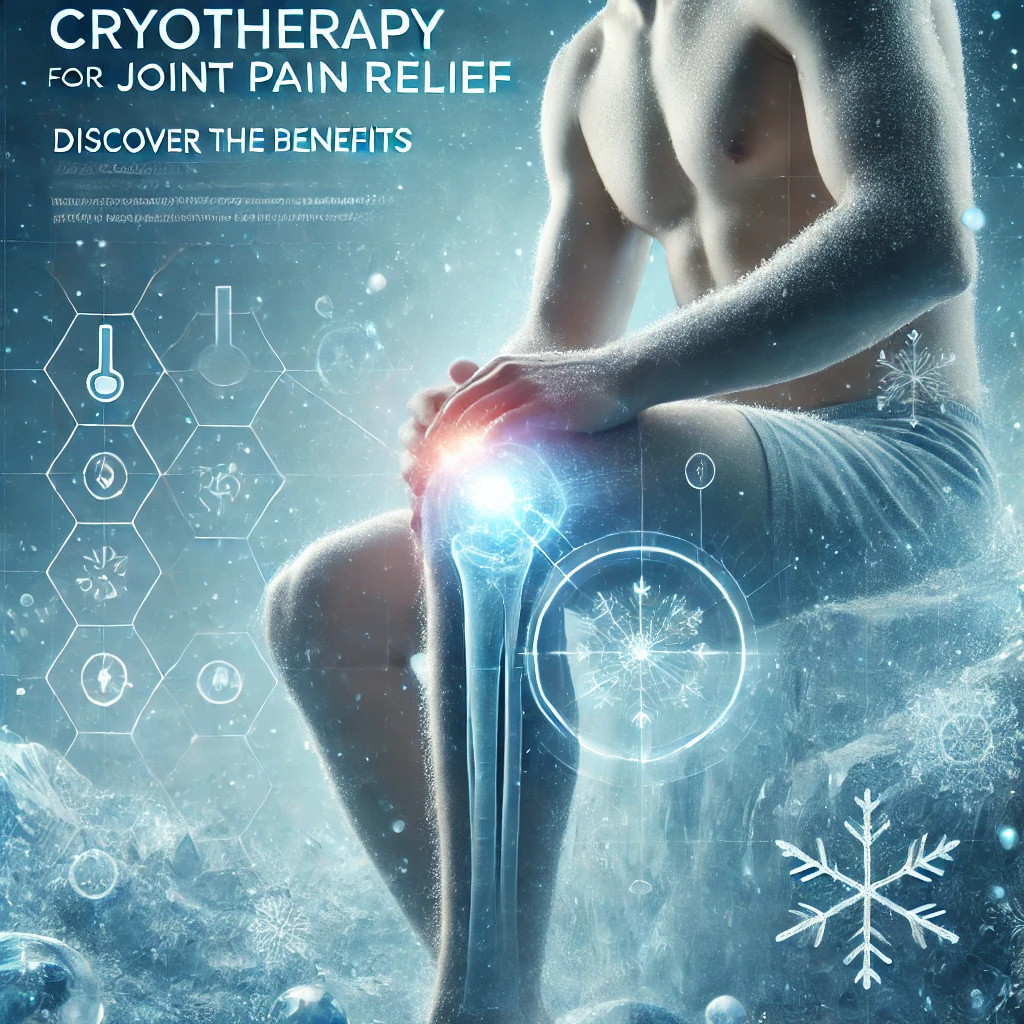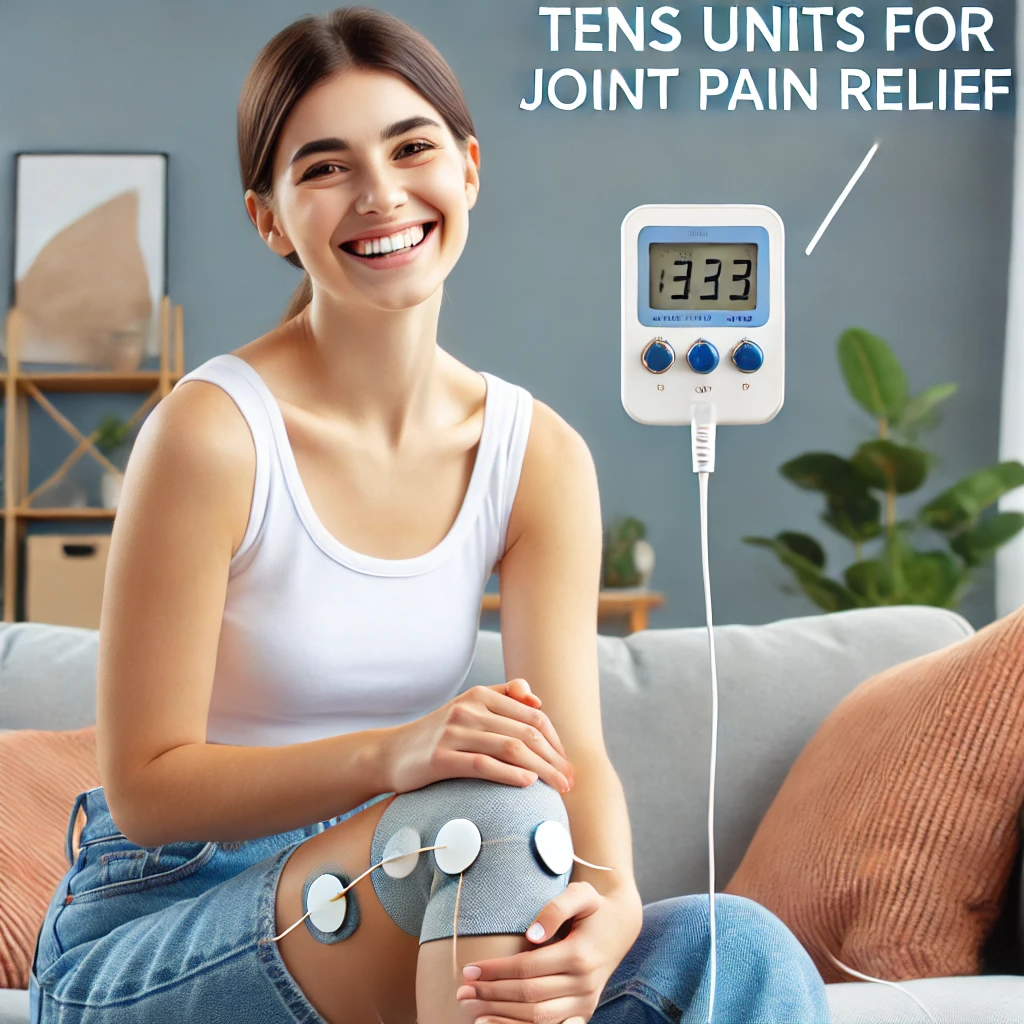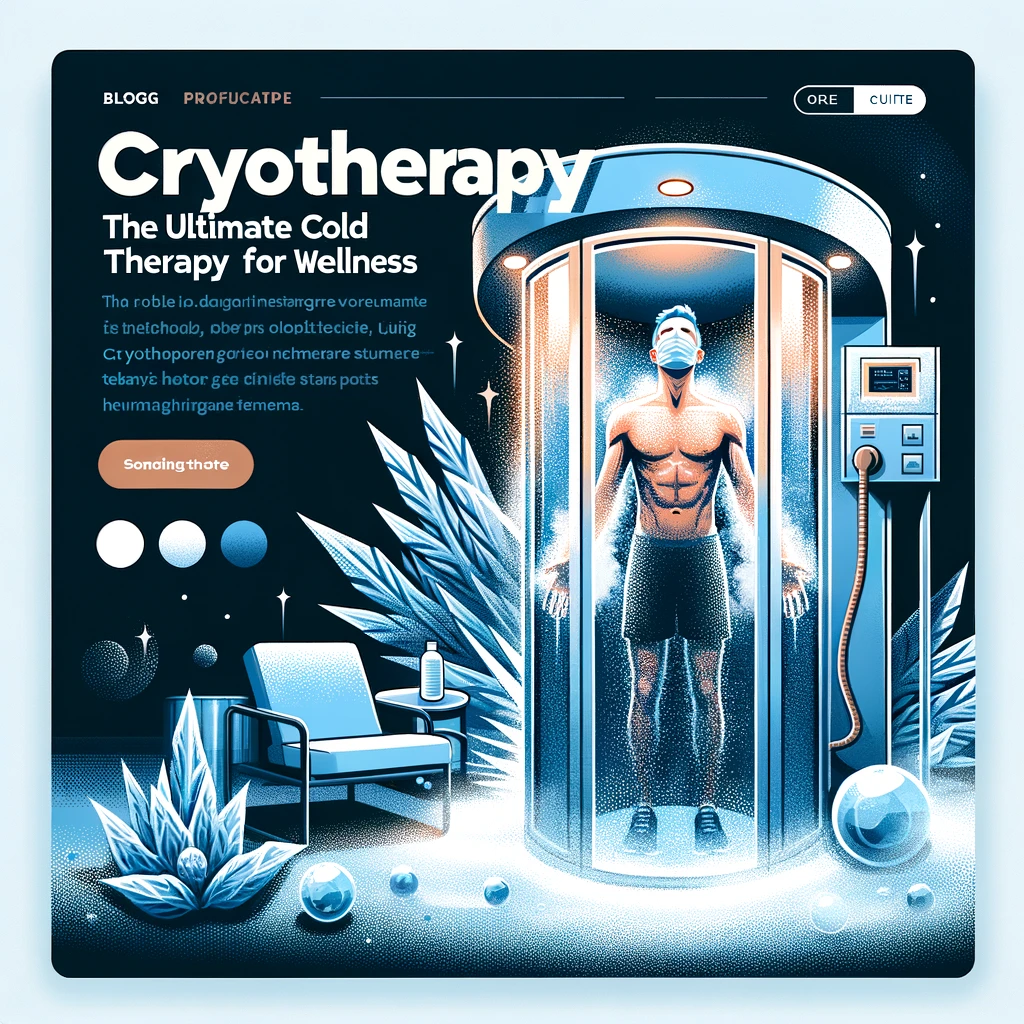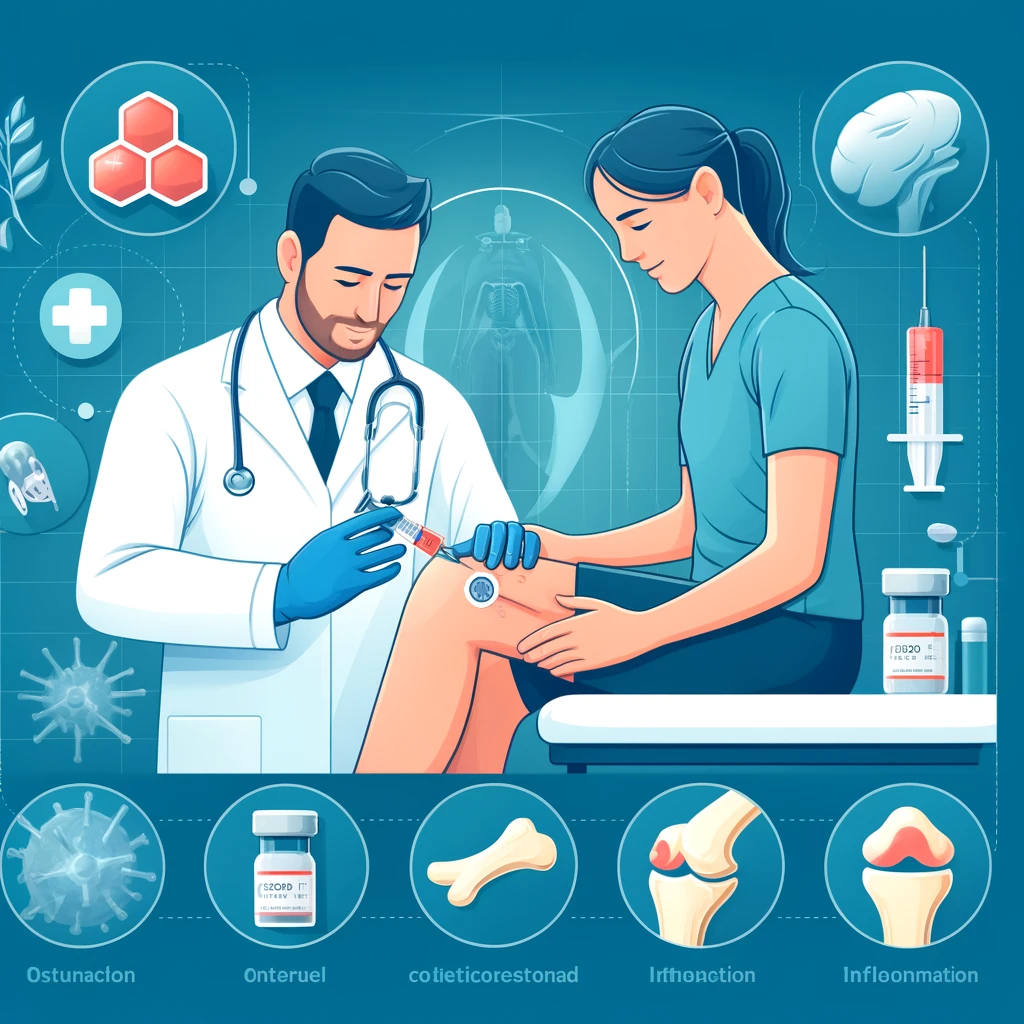
Table of Contents
Dealing with joint pain can be an everyday battle, turning even the simplest tasks into daunting challenges. Whether it’s the stiffness in your knees making climbing stairs a painful ordeal or the persistent ache in your wrists making writing a test of endurance, joint pain can significantly impact your quality of life. Enter cryotherapy, a treatment method that’s been gaining traction as a potential remedy for joint pain. But what is cryotherapy, and how can it help relieve your aching joints? Let’s dive deep into the chilly world of cryotherapy to uncover its benefits and see if it’s the right solution for you.
Cryotherapy, derived from the Greek words “cryo” meaning cold and “therapy” meaning cure, involves exposing the body to ultra-low temperatures. This treatment isn’t just a fleeting trend; it’s backed by science and used by professional athletes and everyday people alike to manage pain, reduce inflammation, and speed up recovery. The benefits of cryotherapy extend beyond mere pain relief. This innovative treatment can enhance your overall mobility, reduce inflammation, and even improve your mental well-being by triggering the release of endorphins.
Understanding the benefits of cryotherapy is crucial. From its ability to provide immediate pain relief and reduce inflammation to enhancing recovery and mobility, cryotherapy offers a holistic approach to managing joint pain. It is a versatile treatment that can be tailored to individual needs, making it an appealing option for those seeking alternative pain management solutions.
Let’s dive deep into the chilly world of cryotherapy to uncover its multifaceted benefits and see if it’s the right solution for you. From the science behind its pain-relieving properties to the practicalities of undergoing treatment, we’ll explore everything you need to know about using cryotherapy for joint pain relief.
Types of Cryotherapy: Whole-Body vs. Localized
There are two main types of cryotherapy: whole-body cryotherapy (WBC) and localized cryotherapy. Whole-body cryotherapy involves exposing the body to ultra-cold temperatures (as low as -200°F) in a cryo chamber for a short period, typically 2-4 minutes. Localized cryotherapy, on the other hand, targets specific areas using ice packs, cold compresses or specialized devices.
How Does Cryotherapy Work?
The science behind cryotherapy revolves around its ability to cool the skin and underlying tissues rapidly. This rapid cooling triggers a series of physiological responses:
- Vasoconstriction and Vasodilation: Initial exposure to cold causes blood vessels to constrict, reducing blood flow to the treated area. After the session, the blood vessels dilate, increasing blood flow and promoting healing.
- Endorphin Release: The cold exposure stimulates the release of endorphins, which are natural pain relievers.
- Reduction in Nerve Activity: Cryotherapy can decrease the activity of pain receptors, leading to pain relief.
Cryotherapy and Inflammation Reduction
Inflammation is a common culprit behind joint pain. Cryotherapy can help reduce inflammation by lowering the temperature of the inflamed tissues, which slows down the metabolic processes and decreases swelling.
Cryotherapy for Joint Pain Relief
Cryotherapy offers a unique mechanism for joint pain relief:
- Pain Relief: The numbing effect of the cold can provide immediate pain relief by dulling the nerve endings responsible for pain sensations.
- Reduction of Swelling: Cryotherapy helps in reducing joint swelling and stiffness, making it easier to move and perform daily activities.
- Enhanced Blood Circulation: Post-cryotherapy, increased blood flow to the joints can accelerate healing and reduce recovery time.
Comparison with Traditional Pain Relief Methods
Traditional pain relief methods often rely on medications or physical therapy. While effective, these approaches can have side effects or take longer to show results. Cryotherapy offers a faster, non-invasive alternative, with fewer side effects, making it a compelling option for many.
Benefits of Cryotherapy
Immediate Pain Relief
Cryotherapy provides quick relief from joint pain. The extreme cold numbs the area, providing a rapid decrease in pain that can last for several hours post-session.
Reduced Inflammation
The anti-inflammatory effects of cryotherapy are well-documented. By cooling the inflamed tissues, cryotherapy can significantly reduce swelling and redness, helping to alleviate the discomfort associated with joint inflammation.
Enhanced Recovery and Mobility
Athletes and active individuals often use cryotherapy to speed up recovery after intense physical activity. By reducing muscle soreness and joint pain, cryotherapy can help restore mobility and improve overall physical performance.
Long-term Benefits
Regular cryotherapy sessions may offer long-term benefits, such as improved joint function and reduced frequency of pain flare-ups. Over time, this can lead to enhanced quality of life and reduced dependency on pain medications.
Who Can Benefit from Cryotherapy?
Athletes and Active Individuals
Cryotherapy is popular among athletes for its ability to reduce muscle soreness and enhance recovery. It’s also used as part of injury prevention strategies to keep athletes in top condition.
People with Arthritis
Those suffering from arthritis can find relief in cryotherapy’s ability to reduce joint inflammation and pain, making daily activities more manageable.
Post-Surgical Recovery
Cryotherapy can aid in post-surgical recovery by minimizing swelling and pain, helping patients get back on their feet faster.
Cryotherapy Sessions: What to Expect
Preparing for a Cryotherapy Session
Before your session, it’s essential to wear appropriate clothing—usually dry, loose-fitting garments. Most cryotherapy centers provide gloves and socks to protect extremities from the cold.
The Procedure: Step-by-Step
- Preparation: Enter the cryo chamber or apply localized cryotherapy to the targeted area.
- Session: Exposure to cold lasts between 2-4 minutes for whole-body cryotherapy or until the treated area reaches the desired temperature for localized therapy.
- Post-Session: After exiting the chamber, it’s essential to warm up and hydrate. Stretching exercises are recommended to enhance the benefits.
Post-Session Care
Post-session care involves gradual re-warming and hydration. Gentle stretching and light exercise can help improve circulation and enhance the recovery process.
Safety and Risks of Cryotherapy
Common Side Effects
Cryotherapy is generally safe, but some people might experience temporary skin redness, numbness or tingling sensations. These side effects usually resolve quickly after the session.
Who Should Avoid Cryotherapy?
Individuals with certain conditions, such as severe cardiovascular diseases, cold allergies or unmanaged high blood pressure, should avoid cryotherapy. Always consult a healthcare professional before starting any new treatment.
Guidelines for Safe Practice
Ensure that the cryotherapy facility follows proper safety protocols, including the use of certified equipment and trained personnel. Avoid prolonged exposure to extreme cold to prevent frostbite or other complications.
Cryotherapy and Other Treatments
Combining Cryotherapy with Physical Therapy
Cryotherapy can complement physical therapy by reducing pain and inflammation, making it easier to perform rehabilitation exercises and recover from injuries.
Cryotherapy and Medication: Complementary Approaches
While cryotherapy can reduce the need for pain medications, it can be used in conjunction with them for enhanced pain management, particularly in severe cases.
Real-Life Success Stories
Athletes’ Experiences
Many professional athletes swear by cryotherapy for its quick recovery benefits. From marathon runners to football players, cryotherapy helps them stay in peak physical condition by reducing soreness and speeding up recovery times.
Testimonials from Arthritis Patients
Arthritis patients report significant relief from chronic pain and increased joint mobility after regular cryotherapy sessions. The reduction in inflammation helps them perform everyday activities with less discomfort.
Choosing a Cryotherapy Provider
What to Look for in a Cryotherapy Clinic
When selecting a cryotherapy provider, look for a clinic that offers certified equipment, experienced staff and positive reviews from previous clients. Cleanliness and safety standards should also be top priorities.
Questions to Ask Before Your First Session
- What safety measures do you have in place?
- How experienced are the staff members?
- What should I expect during my first session?
DIY Cryotherapy: Is it Effective?
At-Home Cryotherapy Options
DIY cryotherapy can include ice baths, cold showers, or using ice packs. While these methods can offer some benefits, they are generally less effective than professional treatments.
Comparing DIY Methods to Professional Treatment
Professional cryotherapy provides more controlled and effective cold exposure, often yielding better results compared to DIY methods. It’s important to understand the limitations of at-home treatments and use them as a supplement rather than a replacement for professional cryotherapy.
Cost of Cryotherapy
Average Costs per Session
The cost of cryotherapy can vary widely, with sessions ranging from $30 to $100 depending on the type and location. Package deals can offer more economical options for regular users.
Insurance and Payment Options
Some insurance plans may cover cryotherapy, particularly if prescribed for medical conditions. Check with your provider for coverage details and available payment plans.
Future of Cryotherapy
Emerging Research and Trends
Ongoing research continues to explore new applications for cryotherapy, from enhancing athletic performance to treating chronic pain conditions. Innovations in cryotherapy technology are also making treatments more accessible and effective.
Innovations in Cryotherapy Technology
Advancements include the development of more precise cryotherapy devices and personalized treatment plans tailored to individual needs, promising a brighter future for cryotherapy applications.
Conclusion
Cryotherapy presents a promising option for those seeking relief from joint pain. With its ability to provide quick pain relief, reduce inflammation, and enhance recovery, it’s no wonder that cryotherapy is gaining popularity. Whether you’re an athlete looking to improve performance or someone battling arthritis, cryotherapy might just be the game-changer you need.
FAQs
What should I wear during a cryotherapy session?
Wear loose-fitting, dry clothing. Most facilities provide protective gear like gloves and socks.
How often should I undergo cryotherapy for best results?
Frequency varies, but many people benefit from 2-3 sessions per week. Consult with your provider for a personalized plan.
Can cryotherapy help with conditions other than joint pain?
Yes, cryotherapy is also used for muscle recovery, skin conditions and general wellness.
Is cryotherapy painful or uncomfortable?
Most people experience cold sensations but not pain. The exposure is brief, making it manageable for most users.
How long does each cryotherapy session last?
Whole-body sessions typically last 2-4 minutes, while localized treatments may vary based on the area being treated.



